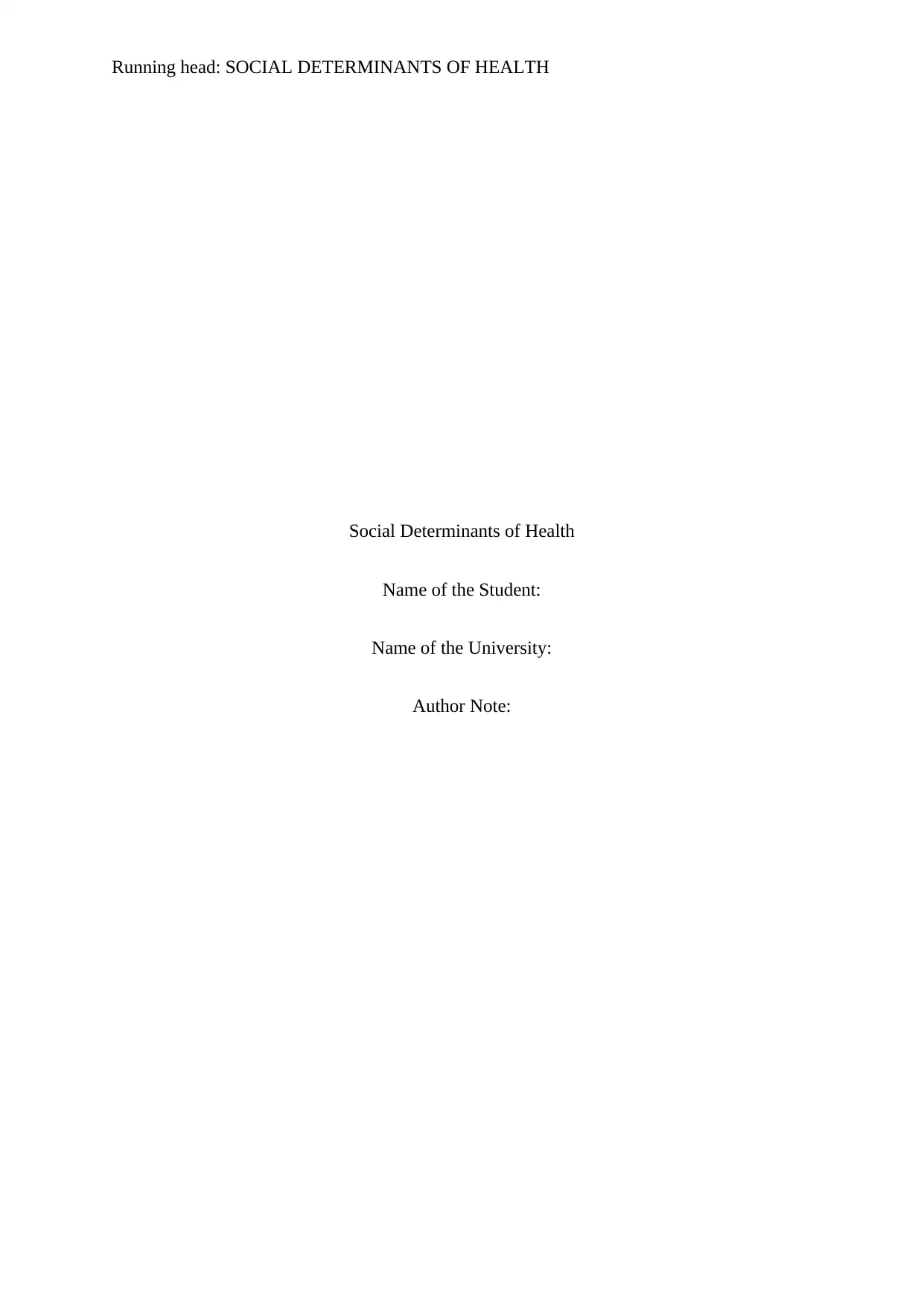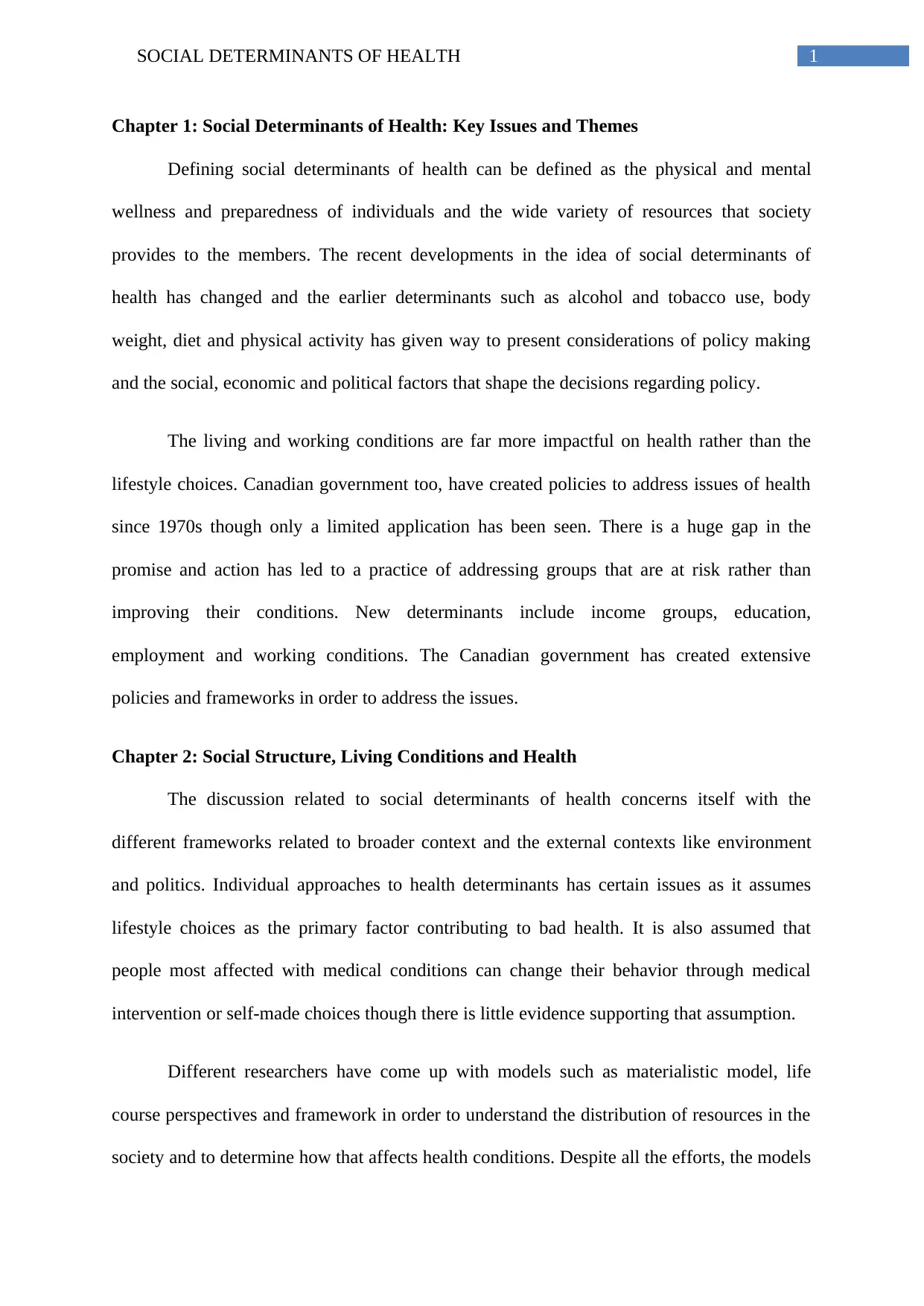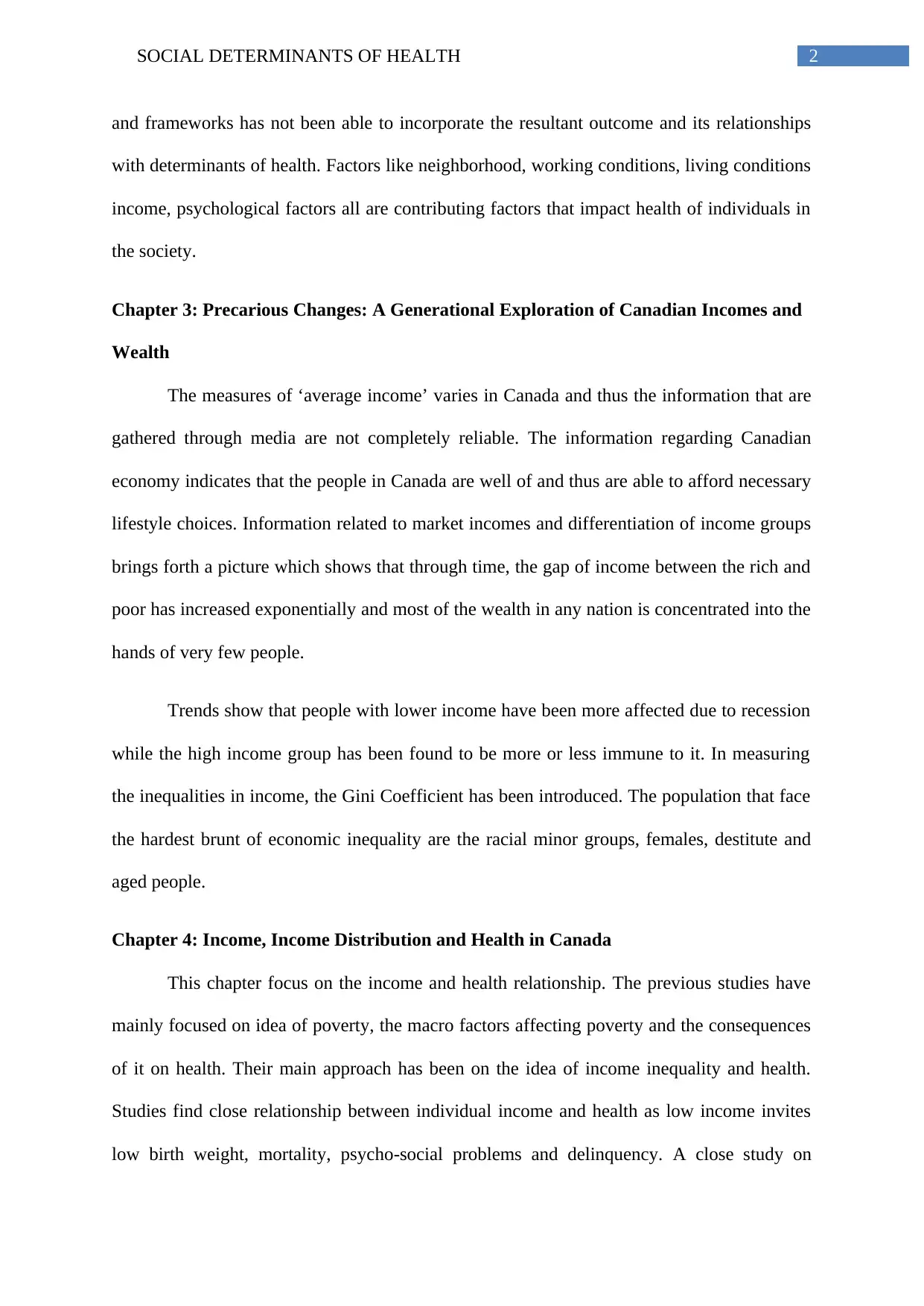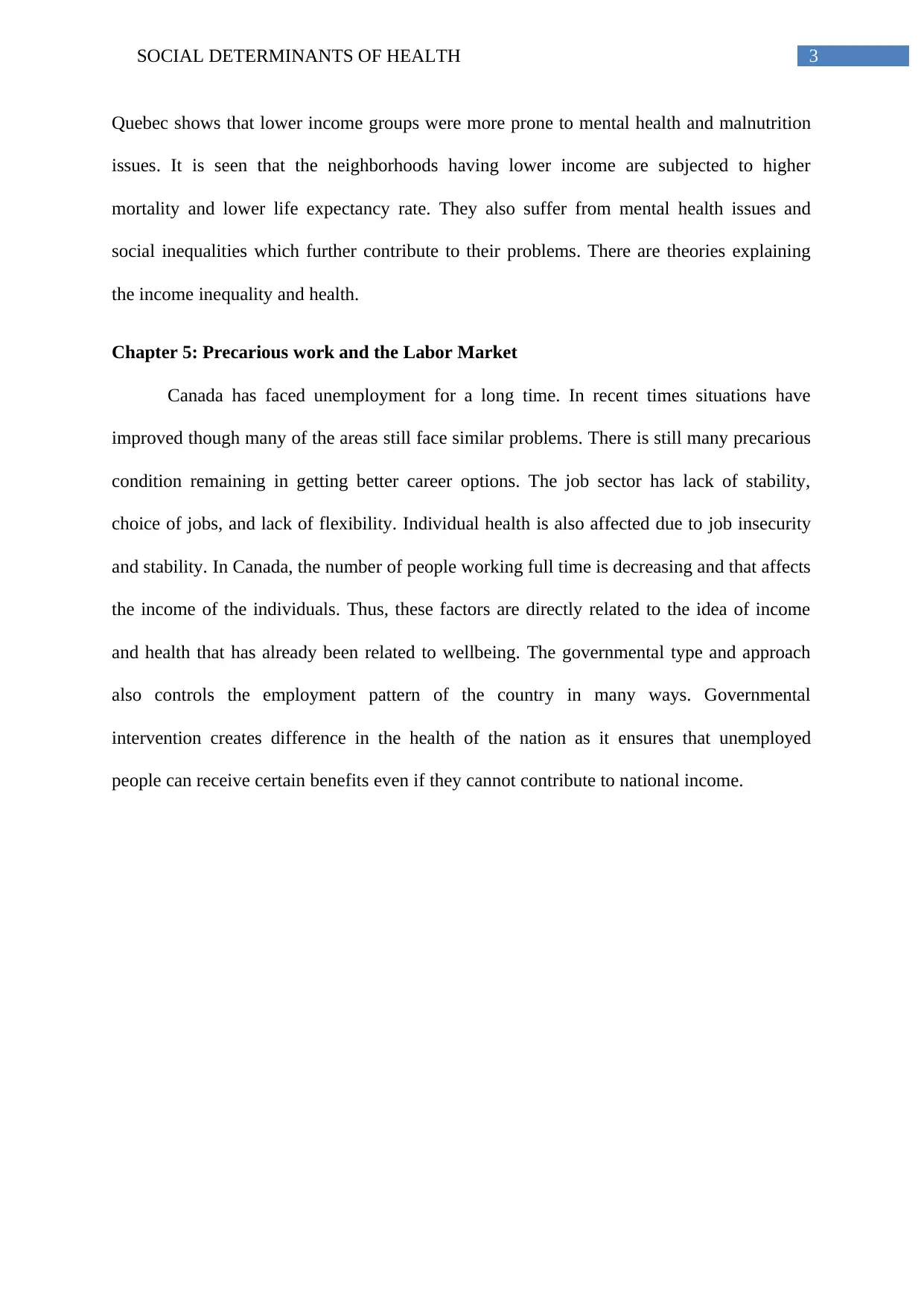Comprehensive Report: Social Determinants of Health in Canada
VerifiedAdded on 2022/08/31
|4
|900
|19
Report
AI Summary
This report provides a comprehensive analysis of the social determinants of health, with a specific focus on the Canadian context. It begins by defining social determinants of health and their evolution, contrasting lifestyle choices with the impact of living and working conditions. The report then explores the relationship between social structures, living conditions, and health outcomes, examining various models and frameworks. It delves into income disparities in Canada, analyzing the gap between rich and poor, and the impact of economic inequality on different demographic groups. The report further investigates the correlation between income, income distribution, and health, highlighting the effects of low income on health indicators such as birth weight, mortality, and mental health. Additionally, it examines precarious work and the labor market in Canada, discussing the impact of job insecurity and lack of stability on individual health. The report concludes by touching upon the role of governmental interventions in shaping employment patterns and their influence on the health of the nation. This report provides a thorough overview of key issues, trends, and relationships within the realm of public health and social determinants.
1 out of 4











![[object Object]](/_next/static/media/star-bottom.7253800d.svg)